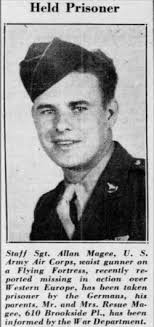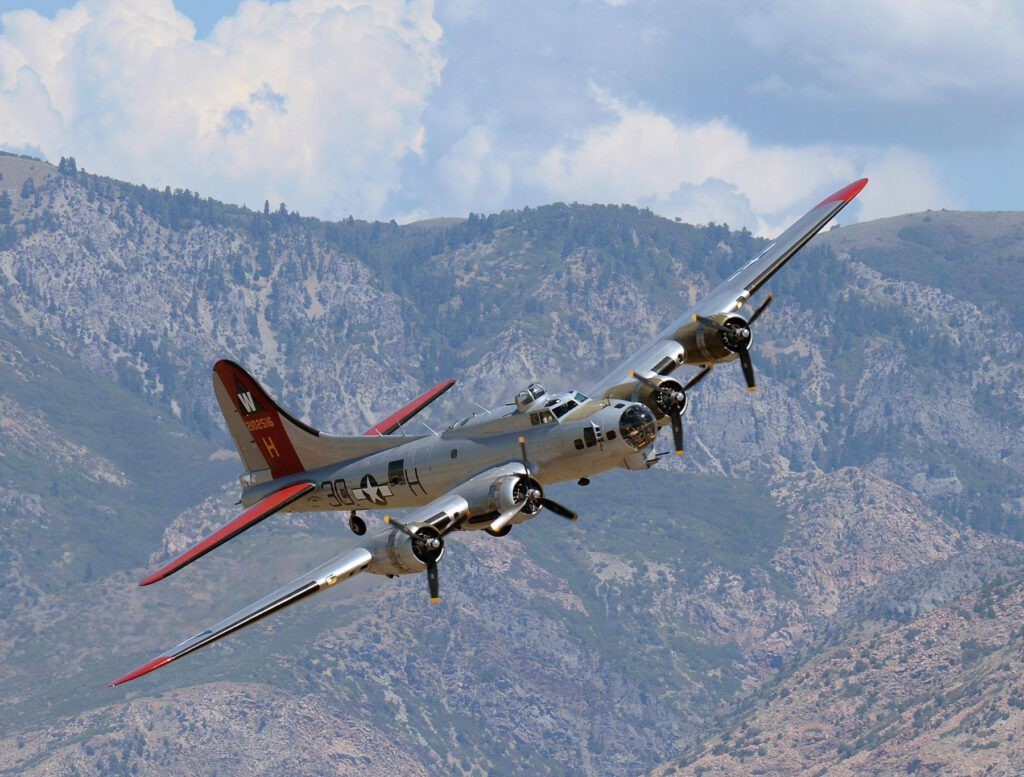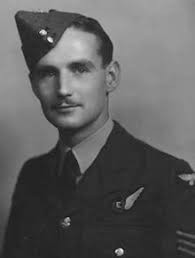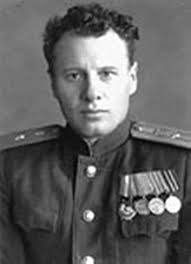
Alan Magee
In 1943, Alan Magee, serving as a crew member of a B-17, took part in a bombing raid on Saint-Nazaire. The raid caused massive destruction. Magee, however, had not yet seen enough, and he leapt from his B-17, seemingly determined to cause even more damage below. The result of his freefall without a parachute was unexpected: he survived—and lived many years afterward.
Saint-Nazaire, located on the banks of the Loire near the Atlantic Ocean, was no stranger to water. This strategic location made it vital to the Germans. In 1939, at the start of World War II, despite desperate efforts by the British and French, Hitler’s advance could not be stopped.
On June 17, 1940, with the Germans closing in, around 9,000 British soldiers boarded various ships to escape. For many, the attempt was successful, but for the 4,000 passengers of the RMS Lancastria, it ended in tragedy when the ship was sunk by German aircraft.

Because of its location, the Germans transformed Saint-Nazaire into one of their most important naval bases, building a heavily fortified and protected U-Boat facility. German ships and submarines could easily strike British supply convoys, making it essential for the Allies to neutralize the port.
On March 28, 1942, the British launched the successful Operation Chariot. The attack crippled the dry docks, which remained unusable for the rest of the war for large German battleships. However, the U-Boat pens continued their operations.
On January 3, 1943, the Americans mounted their sixth bombing raid on Saint-Nazaire, this time hoping to knock out the U-Boat base once and for all. The mission involved 85 B-17s under the command of Curtis LeMay. Among them was the B-17 nicknamed Snap! Crackle! Pop!
Aboard that plane was Alan Magee, a 24-year-old from Plainfield, New Jersey. Because of his small stature, Magee served in the plexiglass ball turret, armed with twin heavy machine guns. It was the most vulnerable position in the aircraft and often the first target for enemy fighters—its thin plexiglass offering little protection against bullets.
To minimize civilian casualties, bombing runs were carried out in daylight. The drawback, however, was clear visibility to German anti-aircraft gunners. The squadron took off from Molesworth, England. This was Magee’s seventh mission. Once over France, he squeezed himself into his turret—just in time, as 35 Messerschmitts swooped in. The Americans managed to down 19 enemy aircraft and seriously damage another, but one of the remaining BF-109s struck the B-17’s right wing, tearing off a large section. Bullets also ripped through Magee’s turret.
Magee crawled out onto the deck of the plane and was horrified to see the right side of the aircraft torn open. The plane shook violently before diving toward the ground. Rushing to grab his parachute, Magee discovered it had been shredded beyond use. With the bomber plummeting like a rocket, he had only one choice: take a deep breath, pray, and leap through a hole in the fuselage.
Below, the people of Saint-Nazaire waited for the raid to end. Looking skyward, some noticed an unfamiliar object falling. At first, they thought it was a bomb—but as it drew closer, they realized it was a man. After a fall of nearly six kilometers, Magee crashed through the glass roof of the town’s railway station, shattering the dome before hitting the station floor.
Miraculously, he survived. A German doctor quickly attended to him and promised to do everything possible to save him—and he kept his word. Despite 28 shrapnel wounds, a broken nose, a torn eyelid, a punctured lung and kidney, a broken right leg and ankle, and an almost severed arm, Magee lived. He received proper medical care from the Germans before eventually being transferred to a prisoner-of-war camp, where he remained until the war ended.
Of the 85 bombers that flew the mission, 76 hit their target. Forty-seven were permanently damaged, and seven were shot down—including Snap! Crackle! Pop!
On January 3, 1993, exactly fifty years after the raid, Alan Magee returned to Saint-Nazaire. Despite the destruction he had once helped unleash, the citizens welcomed him warmly and even made him an honorary citizen. Magee passed away in December 2003 at the age of 84.

Nicholas Alkemade
Falling 5.5 kilometers without a parachute usually has only one outcome. But there are exceptions—Alan Magee’s story made that clear. Another man who survived such a fall was Nicholas Alkemade.
Born in Norfolk, England, in 1922, Alkemade worked as a gardener before enlisting in the RAF when the war began. Trained as an air gunner, he flew aboard a Lancaster bomber named Werewolf. He completed 14 successful missions until one night, during a raid on Berlin, his plane was shot down over the Ruhr. Fire engulfed the fuselage and burned the crew’s parachutes. Faced with a choice between burning alive or jumping, Alkemade chose the latter.
He fell at nearly 200 km/h, lost consciousness, and braced unknowingly for certain death. Instead, he awoke three hours later, lying in deep snow in a pine forest. Young, flexible trees had slowed his fall, and the snow cushioned the impact. He had suffered only a twisted knee, burns, and cuts from flying perspex.

Though he had survived the fall, he now faced the bitter cold night, unable to walk. Using his whistle, he attracted the attention of German civilians, who brought him to the Meschede hospital for treatment. When strong enough, he was interrogated by the Gestapo, who doubted his story—until they examined the wreckage of his Lancaster and found his burned parachute still inside.
Alkemade became something of a celebrity, even chatting with Luftwaffe officers about his miraculous fall. Nevertheless, he was sent to Stalag Luft III. Later, when the camp’s 10,000 prisoners were forced to march hundreds of kilometers across northern Germany during a brutal winter, Alkemade once again survived. After the war, he worked in Britain’s chemical industry. He died in June 1987 at the age of 64.

Ivan Chisov
Ivan Chisov, a navigator aboard an Ilyushin Il-4 bomber, had a similar fate. In January 1942, his plane was attacked by Luftwaffe fighters, forcing him to bail out at an altitude of about 7,000 meters.
Fearing he would be an easy target if he opened his parachute too soon, Chisov intended to deploy it after clearing the combat zone. But he lost consciousness in the thin, oxygen-poor air before he could pull the cord.

He struck the snowy edge of a ravine at nearly 200 km/h, rolled down its slope, and came to rest still strapped to his unopened parachute. Soviet ground troops rushed to his aid, stunned to find him alive. He had suffered multiple severe fractures and nearly every bone in his body seemed broken. His condition was critical for a month, but he survived.
Amazingly, within three months Chisov was able to fly again. Although he requested a return to combat duty, he was instead assigned as a navigation trainer. Over his career he flew a total of 70 missions. Chisov died in 1986.

Eugene Moran
Of a different kind, yet equally extraordinary, is the story of Eugene Moran.
Born on July 17, 1924, in Wisconsin, the son of a farmer, Moran enlisted in the US Army Air Forces at age 18, shortly after Pearl Harbor. Assigned to the 96th Bombardment Group, 339th Squadron, Eighth Air Force, he served as tail gunner aboard the B-17 Rikki Tikki Tavi.
On November 29, 1943, during a raid on Bremen, the bomber successfully dropped its payload but fell behind the formation, becoming easy prey for German defenses. Hit hard by flak, the B-17 broke in two. The navigator bailed out, but Moran, trapped in the tail section, could not escape.
Incredibly, the rear fuselage remained largely intact, gliding earthward with Moran still manning his Browning machine gun. He continued firing at attacking Messerschmitts until the wreckage slammed into a tree and came to rest.
Gravely injured, Moran was found by two Serbian prisoners of war—both doctors—who did their best to treat him. He had a fractured skull, broken ribs and arms, and other severe wounds. Though he recovered, Moran endured 18 months in German, Russian, and Polish prison camps, and even survived an 850-kilometer death march in April 1945.
He eventually returned home, lived a long life, and died on March 23, 2014.